- *Corresponding Author:
- Jingyi Li
Department of Clinical Medicine, Fujian University of Traditional Chinese Medicine, Fuzhou, Fujian 350122, China
E-mail: jylifjtcm@163.com
| This article was originally published in a special issue, “Drug Discovery and Repositioning Studies in Biopharmaceutical Sciences” |
| Indian J Pharm Sci 2024:86(4) Spl Issue “274-281” |
This is an open access article distributed under the terms of the Creative Commons Attribution-NonCommercial-ShareAlike 3.0 License, which allows others to remix, tweak, and build upon the work non-commercially, as long as the author is credited and the new creations are licensed under the identical terms
Abstract
To investigate the therapeutic value of Mahuang Fuzi Xixindecoction in Chinese medicine and its effect on the improvement of serum interleukin-10, interferon‐gamma and nuclear factor kappa B levels for allergic rhinitis. 110 individuals with allergic rhinitis admitted to our hospital from December 2021 to December 2022 were selected and were divided into 2 groups, control and observation group. Control group were given loratadine tablets (Western drug treatment) orally once a day for 1 mo while the observation group was given Mahuang Fuzi Xixin decoction. All the individuals were observed for the presence of primary and secondary traditional Chinese medicine symptoms such as nasal congestion, nasal itching, fear of wind and cold after treatment, cough, thin sputum or pallor, respectively. According to the traditional Chinese medicine symptom score scale, tumor necrosis factor-alpha, interleukin-6 and immunoglobulins, etc., and the adverse reactions were investigated. Treatment with Mahuang Fuzi Xixindecoction had a significant improvement in the improvement of symptoms in the subjects compared to the statistics of the control group (p<0.01). Further, efficacy evaluation showed that the overall effective rate of 90.91 % in the individuals with allergic rhinitis which was significantly higher than that of the control group. At the completion of the treatment, we noticed a significant improvement in observation group by evaluating sneezing and nasal congestion. Laboratory tests suggested that the serum inflammatory factors such as interferon‐gamma, tumor necrosis factor-alpha, C-reactive protein and laboratory-measured immunoglobin E levels reduced in the observation group after treatment of Ephedra sinensis, which assisted in alleviating the immune imbalance in individuals. Compared to the control group, the incidence of adverse reactions was significantly lower in the observation group than in the control group. It is suggested that a relatively good safety profile exists for Ephedra dosing regimen. It has certain affirmative efficacy and satisfactory safety record in the treatment of allergic rhinitis compared with Western drug regimens, which can not only help patients to regulate their own immune imbalance but also help them to reduce their symptoms. It has favorable advantages and is worth of clinical promotion in the diagnosis and treatment of allergic diseases.
Keywords
Rhinitis, Mahuang Fuzi Xixin decoction, interleukin-10, interferon-gamma, nuclear factor kappa B
Allergic rhinitis is a common disease known as "hay fever"[1], which is a combination of allergens in the body caused by dust, seasonal pollen and dander from surrounding pets, and molds in the environment. It may also be caused due to the presence of allergies in the body itself. In the presence of the above-mentioned allergens, T helper 2 (Th2) cells of the autoimmune system produce excessive amount of major immune cytokines such as Interleukin (IL)-4 and IL-13[2]. These factors further drive the production of Immunoglobin E (IgE) antibodies and effectively bind to mast cells. During allergic rhinitis exposure to allergens, these series of reactions rapidly produce sustained release of histamines and other inflammatory mediators such as leukotrienes for a short period of time, further causing reactive vasodilation of the local nasal cavity[3]. As a result, the physiological response which is mainly manifested by increased local blood flow, leads to an increase in nasal mucus, so that most of these patients having nasal inflammation are typically characterized by runny nose, frequent sneezing, itching and nasal congestion[4]. In addition, genetics is a potential factor in the study of pathogenesis. Both genetic predisposition and environmental factors can contribute to this disease.
Clinically, the diagnosis of the disease mostly relies on the symptomatic observation, evaluation, aggressive in vivo skin prick testing and hematological testing for IgE antibodies. Preferred Western treatment options represented by antihistamines and allergen immunotherapy can provide some positive symptomatic effects though[5]; however, some unavoidable side effects further affect the value of the treatment options for the disease. For example, drowsiness, increased heart rate and weight gain are the frequent adverse effects of decongestants and corticosteroids. Conventional clinical and Western medicine can only help patients to improve the local symptoms in short term, but probably not the root cause of the disease[6]. Immunotherapy relies on long-term and low-dose regimens, which can help the patients to actively build up an immune barrier to some extent, but requires significant time, cost and frequent visits to the physician for effective delivery. While these have some value, there is still a medical blind spot in the treatment of this disease as an immune disorder. This also predetermines the risk of a poor response to standard treatment in these patients despite a series of aggressive clinical consultations. It is possible that some of the symptomatic medications may not have any valuable effect on the underlying cause of allergic rhinitis[7]. The focus of clinical treatment is to save such patients efficiently, considering that patients may have certain individualized differences in immune system.
In contrast, Traditional Chinese Medicine (TCM), with the aim of targeting the underlying cause of the disease, exists in multiple means. Ancestral medicine has some unique advantages for allergic rhinitis. First of all, this disease belongs to the category of congested nose[8] and most of these patients have deficiency of spleen and kidneys. So in TCM treatment, the 1st choice of treatment is to dispel wind, disperse cold and warm yang. Mahuang Fuzi Xixin decoctionis used as a combination in Chinese medicine; its main active components are ephedrine, pseudoephedrine, methylephedrine and neaconitine, and studies have shown that this important formula has positive expectorant, anti-inflammatory and analgesic effects[9]. Combined use of this decoction can have some potential therapeutic value in many abnormal health conditions. In contrast, Mahuang Fuzi Xixin decoction in this disease and very few are only about the exploration of the Chinese medical theory and prescription Mahuang Fuzi Xixin decoction and to further confirm that this herbal formula can be of good value in allergic rhinitis, we conducted this study. In order to further confirm the value of this herbal formula in allergic rhinitis, we conducted a study to help such patients to get better guidance and help in their treatment plan.
Materials and Methods
General information:
110 individuals with allergic rhinitis admitted to our hospital from December 2021 to December 2022 were selected in accordance with the Declaration of Helsinki for this study. All the individuals were divided into observation and control groups. The observation group constituted of 29 male and 26 female individuals, with mean age (39.25±2.04) y and disease duration (5.33±1.03) y.
Similarly, the control group constituted of 31 males and 24 female individual with the mean age (39.70±1.95) y and disease duration (5.41±1.66) y. The general clinical data of the individuals were complete, comparable and had the basis for further studies (p>0.05).
Inclusion criteria: Patients who met the relevant points according to the diagnosis and treatment guidelines for allergic rhinitis regarding Western medicine diagnosis[10], such as sneezing, clear watery nasal discharge, presence of random 2 symptoms like nasal itching and nasal congestion, presence of certain edema of nasal mucosa and watery nasal discharge at the time of patient's diagnosis and their presence of specific IgE by examination and patients who met the Chinese medicine treatment of allergic rhinitis were included in the study[10-12].
All the individuals were monitored to check if they had yang deficiency; the patient's current primary symptoms were found to be nasal congestion, itching, fear of cold, while secondary symptoms included cough, thin sputum and pallor. No allopathic or anti-allergic therapy was obtained within 1 w prior to inclusion in this prospective.
Exclusion criteria: Patients with certain other inflammatory reactions; patients having current immune mechanism disorders after clinical and laboratory examination; patients having psychiatric disorders and patients having some allergic reactions to the drugs and herbs involved in this study were excluded[13].
Treatment method:
Individuals in the control group were provided with a treatment regimen of 10 mg loratadine tablets orally, once daily for 1 mo/course of treatment where the treatment lasted for 2 mo.
Observation group was given Mahuang Fuzi Xixin decoction contains Ephedra, Radix Aconitum lateralis praeparata and Radix et Rhizoma Asarum. It was prepared by adding 60 g of Ephedra to 2700 ml of water which was soaked for 30 min and was boiled. After 20 min, surface foam was removed and 90 g of Aconitum along with 30 g of Asarum was cooked together for 90 min. Then, the solution was filtered and concentrated to about 200 ml, thereby forming Ephedra, Aconitum and Asarum decoction with dosage of 0.9 g/ml.
Observation indices:
Clinical symptoms: Patients were observed for the presence of primary TCM symptoms such as nasal congestion[14], nasal itching and fear of wind and cold after treatment and similarly for secondary TCM symptoms such as cough, thin phlegm, or pale face. High score indicates more severe symptoms in patients after treatment.
Serum inflammatory markers: 7 ml of peripheral venous blood was collected from all the patients, and the serological inflammatory and immunological markers were measured by anticoagulation and centrifugation using fully automated biochemical analyzers and Enzyme-linked Immunosorbent Assay (ELISA)[15]. Inflammatory markers such as C-Reactive Protein (CRP), Tumor Necrosis Factor-Alpha (TNF-α), IL-6, IgA and IgE were detected.
Adverse reactions: Presence of adverse events such as gastrointestinal discomfort, dizziness, headache, nasal bleeding and itchy skin rash among the patients were investigated.
Statistical analysis:
Statistical Package for Social Sciences (SPSS) version 25.0 was used for the measurement of the data. The measured data was expressed by (mean±standard deviation) and t-test. Categorical count data adverse reactions were expressed as number of cases (n), Percentage (%) and Chi-square (χ²) test where p<0.05 was considered as statistically significant difference.
Results and Discussion
Observation of clinical signs and symptoms, and treatment effects of the individuals was studied. Our study showed that the treatment of Mahuang Fuzi Xixin decoction had a significant improvement of symptoms among the patients of observation group, compared to the data of the control group (p<0.01) (Table 1). Further efficacy evaluation showed that the overall effective rate of 90.91 % which was significantly higher in patients with allergic rhinitis of the observation group compared to the control group (fig. 1). At the end of the treatment regimen, we found significant improvement in this aspect among the of the observation group by evaluating sneezing and nasal congestion (Table 2). This further illustrates more prominent value of the application of the Chinese medicine, Ephedra and Phyllanthus Tang, compared with Western medicine treatment.
| Group | n | Physical sign score | Clinical sign score | Overall score | |||
|---|---|---|---|---|---|---|---|
| Pre-treatment | After-treatment | Pre-treatment | After-treatment | Pre-treatment | After-treatment | ||
| Control | 55 | 2.1±0.5 | 1.4±0.8 | 10.2±0.8 | 6.9±2.6 | 12.4±2.1 | 8.2±3.1 |
| Research | 55 | 2.1±0.4 | 0.7±0.8 | 10.1±0.7 | 4.4±2.2 | 12.5±2.1 | 5.3±2.2 |
Table 1: Comparison of clinical symptom scores in two groups.
| Group | n | Time | Sneeze | Clear nose | Nasal congestion | Nasal itching |
|---|---|---|---|---|---|---|
| Control | 55 | Pre-treatment | 2.71±0.35 | 2.75±0.39 | 2.88±0.52 | 2.74±0.56 |
| After treatment | 1.33±0.23 | 0.37±0.26 | 0.55±0.38 | 2.68±0.29 | ||
| Research | 55 | Pre-treatment | 2.61±0.36 | 2.71±0.38 | 2.88±0.49 | 2.77±0.49 |
| After treatment | 0.55±0.22 | 0.37±0.26 | 0.55±0.38 | 0.59±0.46 |
Table 2: Improvement of symptoms in patienst of two groups.
Observation of laboratory immune indices was carried out. Laboratory tests suggested that the serum expression of inflammatory factors was elevated in the patients after the application of Mahuang Fuzi Xixin decoction and the overproduction of Interferon‐Gamma (IFN-γ) could lead to chronic and destructive inflammation, while the serum TNF-α and CRP, and laboratory measured levels of immune protein IgE reduced in the patients of the observation group after treatment (fig. 2-fig. 4), which was attributed to the immunomodulatory effect of its Chinese medicine. The immunomodulatory effect of the medicinal formula, denote more reports confirming positive immunomodulatory effect of Mahuang Fuzi Xixin decoction in previous studies, helping patients to improve the immune imbalance.
Further, the adverse reactions among the patients were observed. Results of the study showed that there were some adverse reactions due to the application of Mahuang Fuzi Xixindecoctionand Phyllanthus Tang, such as gastrointestinal discomfort and nasal bleeding, but the incidence of adverse reactions was significantly low when compared to the control group (patients who received Western medicine treatment) (fig. 5). Likewise, it is suggested that a relatively good safety profile exists for Mahuang Fuzi Xixindecoction with different dosing regimens.
Chinese herbal medicine has a long history of clinical application and disease treatment in Asia, and is still widely used in other countries[16]. The active ingredients include Ephedra (a classical stimulant) and pseudoephedrine as the main components of these herbs, which are used in TCM in certain ratios for the treatment of respiratory diseases. According to the Chinese medicine, allergic rhinitis essentially belongs to the category of congested nose and congestion while sneezing[17], which can be triggered by wind and cold (including allergens) and the pathogenic mechanism mainly focuses on the deficiency of lung qi in the body, lack of consolidation of the body surface and the invasion of wind and cold; the disease is characterized by deficiency and cold. In the clinical diagnosis and treatment of Chinese medicine, the primary principle is to dispel wind, cold and warm yang; both symptoms and the root cause must be treated[18]. In our study, three herbs combined with Ephedra to dispel wind and cold, to warm kidney yang, pungent and warm, and strong smell of pungent and Phyllanthus along with Ephedra can be beneficial.
Olein and linolein in seeds can be used as medicine, which has the effect of clearing heat and detoxifying, removing poison and reducing swelling. In the herbal formula we use, the active ingredient of Ephedra helps the body to resist allergy by inhibiting the release of allergic mediators in the metabolic reaction after the body's basal allergen and also promotes local nasal end vasoconstriction. This effect allows the number of Th2 cells to receive some suppression, while inhibiting the increased production of IL-10, IL-12 and IL-16 caused by it, which in turn inhibits the production of antigen-specific IgE antibodies by B lymphocytes (B cells) induced by this immune response[19], suppressing the allergic reaction of local nasal mucosal tissue, resulting in a significant improvement of the patient's nasal mucosal swelling symptoms; Phyllanthus had a promoting effect on humoral and cellular immunity. All the three drugs cause a significant reduction in the release of allergic mediators during the patient's own allergic reaction due to tachyphylaxis, thus acting as an anti-allergic reaction[20]. The results of our study showed that the patients were treated and their related symptoms were significantly improved in the study group, which also confirmed the significant clinical therapeutic value of Ephedra, and Phyllanthus soup. In addition, the clinical symptom scores of the patients were significantly better. The clinical efficacy of Ephedra, Radix Aconitum lateralis praeparata and Radix et Rhizoma Asarum was significant compared with conventional Western medicine treatment regimens, and the good effect of Mahuang Fuzi Xixin decoction was also demonstrated by the good improvement of the patients' symptoms such as sneezing and nasal itching after treatment.
During the pathogenesis of allergic rhinitis, there is an extremely complex interaction of immune, cellular and molecular pathways[21]. First of all, during the involvement of cytokines produced by Th2, eosinophils also simultaneously release a certain amount of pro-inflammatory mediators represented by alkaline proteins, which cause local tissue damage during their recruitment in the nasal passages. In this process, Nuclear Factor Kappa B (NF-κB) plays a key role in the activation of the immunomodulatory response[22], which also includes signals from pathogens and inflammatory cytokines, thus causing the expression of inflammatory genes in the body and increasing the production of inflammatory mediators at the molecular level. IL-10 and IFN-γ can affect the activation of NF-κB in the body to some extent.
The formula of Shao-Yin disease in the treatise on typhoid can relieve the internal cold of the body, which can play a positive role in warming the kidneys and helping Yang, returning Yang to rescue the rebellious effect, while Ephedra can help improve the external cold of the body. It can dispel wind and relieve itching. Additionally, Mahuang Fuzi Xixin decoction has the effect of benefiting qi, warming yang and consolidating the surface[23]. The combination of these formulas can play a certain role in treating both the symptoms and the root cause, on the one hand, warming and dispersing wind and cold, on the other hand, helping the body's kidneys to absorb qi and warming the meridians to reach the surface. Among the active chemical components of Mahuang Fuzi Xixin decoction can help inhibit Th2 cell-mediated histamine release and, at the cellular level, can help inhibit the allergen-induced immune response of the body involving Th2 cells and eosinophils. To some extent, it inhibits the production of cytokines (e.g., IL-4, IL-6, IL-16 and IL-13) by Th2 cells, which ameliorates the symptoms of discomfort produced by these substances in the nasal passages due to IgE production and eosinophil recruitment, thereby reducing the increase in capillary permeability and enhancing antioxidant capacity. Eosinophils release additional pro-inflammatory mediators (e.g., major alkaline proteins), leading to further inflammation and tissue damage.
The active compounds in Ephedra may affect the activation of Nuclear Factor Kappa B (NF-κB), and at the molecular level the transcription factor NF-κB plays a key role in regulating the immune response. NF-κB is activated in response to allergens in allergic rhinitis and plays a key role in regulating the immune and inflammatory response. Activated NF-κB promotes the expression of inflammation-associated genes, leading to increased production of cytokines and other pro-inflammatory mediators. Production of IgE, the activation of Th2 cells and eosinophils and the activation of NF-κB in these metabolic reactions serves as a good discriminatory basis for the application of Ephedra and Pseudostellaria[21]. Mahuang Fuzi Xixin decoction contains a number of compounds known to have immunomodulatory effects (such as alkaloids, flavonoids and terpenes). These compounds are applied to the organism in herbal formulations, which may regulate IFN-γ levels by affecting signaling pathways and proteins involved in immune cell activation, differentiation, and function.
Ephedra in Mahuang Fuzi Xixin decoction can enhance the body's physical strength and endurance, improve the symptoms of qi deficiency and fatigue, little food and loose stool. It has the effect of strengthening the surface and antiperspirant, alleviating the symptoms of surfactant deficiency and spontaneous sweating, qi deficiency edema. Presence of monounsaturated and polyunsaturated fatty acids, and phytosterols help to reduce cholesterol and improve blood viscosity. Therefore, Mahuang Fuzi Xixin decoction is beneficial to the body to warm the spleen and kidney yang energy, regulate the balance of the body's internal organs, qi and blood functions, and enhance the body's immunity[22]. Therefore, this formula can help to inhibit the excessive production of IFN-γ by T cells, while it can inhibit the excessive production of IL-4 by Th2 cells and promote the further expression of the levels of IL-10 produced by Th2 cells, thus playing a role in regulating the immune response of patients with allergic rhinitis and promote immune tolerance, thus achieving the expected goal of treatment. In addition, among the chemical components of Ephedra, quercetin can play a positive role in inhibiting the production of inflammatory mediators, chemokines and chemical mediators in eosinophils and mast cells, which is beneficial to the immune regulation of patients with allergic rhinitis, while among the chemical component kaempferol has been confirmed in relevant experiments that this substance can help alleviate the symptoms and secretion of histamine in mice with allergic rhinitis[23]. The results of our study also further confirm that Mahuang Fuzi Xixin decoction has better anti-inflammatory, analgesic, anti-metabolic and immune modulating effects.
In addition, the results of our study showed that the number of subjects in the observation group who received treatment with Mahuang Fuzi Xixin decoction had fewer adverse reactions compared to those in the control group, which also reflects the better safety of Mahuang Fuzi Xixin decoction. Compared to Western medical treatment, Chinese medicine has a significantly different approach towards the treatment of allergic rhinitis. TCM seeks to address the underlying cause of the disease and restore balance in the body, rather than just treating the symptoms. However, in Western medical systems, TCM is mostly used for complementary or alternative medicine and does not gain access as 1st line treatment, which limits the application and development of Chinese medicine. Therefore, more research and further studies with large samples are needed to support the promotion of this group of prescriptions.
In conclusion, Mahuang Fuzi Xixin decoctionhas positive efficacy and satisfactory safety profile in the treatment of allergic rhinitis compared with Western drug regimens, which can help the patients not only to regulate their autoimmune imbalance but also to reduce their symptoms. It has good clinical significance and is worthy of clinical promotion in the diagnosis and treatment of allergic diseases.
Conflict of interests:
The authors declared no conflict of interests.
References
- Zhang Y, Lan F, Zhang L. Advances and highlights in allergic rhinitis. Allergy 2021;76(11):3383-9.
[Crossref] [Google Scholar] [PubMed]
- Liu M, Ji W, Pan L, Wang Q, Zhou G. Effects of Ephedra Asarum aconite decoction on Th1/Th2 balance in two animal models of allergic rhinitis. J Tradit Chin Med 2017;4(3):261-71.
- Wang X, Yan ZF, Yuan JJ. Action mechanism of Ephedra in treating allergic rhinitis based on network pharmacology. J Hainan Med Coll 2020(19):5.
- Feng SB, Zunbin KE, Lun XC. Clinical effect of Ephedra, Asarum and aconite decoction treating allergic rhinitis. China Mod Med 2018;28:158-60.
- Liu SY, Wang SP. The influence of Ephedra, Aconite and Asarum decoction on contents of INF-γ and IL-13 of rats with allergic rhinitis. Henan Tradit Chin Med 2017;37(8):1370-2.
- Zhu Y, Zhou X, Ent DO. Effect of Ephedra Fuzi Asarum decoction combined with cetirizine hydrochloride on allergic rhinitis and its quality of life. Med Sci J Cent South China 2018;5:512-5.
- Wei M, Song YX, Liang R. The effect of Chinese Ephedra, aconite and Asarum decoction on Th1, Th2 and apoptosis of lymphocytes. J Guangdong Coll Pharm 2005;21(6):727-9.
- Lin RH, Fan H, Tian Y. Study on proportioning of modified Ephedra, Asarum herb and aconite decoction formula and its dose. Chin Arch Tradit Chin Med 2008;26(1):123-4.
- Duan XM, Li FM, Lu XH. The research into analgetic pharmacological effects on Chinese Ephedra Asarum herb and aconite decoction. Guangming J Chin Med 2006;12(1):44-6.
- Davoodi A, Lotfi R, Mortazavi SH, Karaji AG, Rezaiemanesh A, Salari F. Retinoic acid correlates with reduced serum IL-10 and TGF-β in allergic rhinitis. Rep Biochem Mol Biol 2021;9(4):399-407.
[Crossref] [Google Scholar] [PubMed]
- Chen B, Mao C, Wan Y, Wan L. Impact of Yupingfengsan oral liquid on the expression of IL-4, IFN-γ and NF-κB of allergic rhinitis mice. CK Pharm 2021;5(2):1-8.
- Siddiqui ZA, Walker A, Pirwani MM, Tahiri M, Syed I. Allergic rhinitis: Diagnosis and management. Br J Hosp Med 2022;83(2):1-9.
[Crossref] [Google Scholar] [PubMed]
- Kanjanawasee D, Tantilipikorn P. LNIT-Local nasal immunotherapy in allergic rhinitis: Revisited evidence and perspectives. Curr Opin Allergy Clin Immunol 2022;22(4):259-67.
[Crossref] [Google Scholar] [PubMed]
- Zhang Y, Lan F, Zhang L. Update on pathomechanisms and treatments in allergic rhinitis. Allergy 2022;77(11):3309-19.
[Crossref] [Google Scholar] [PubMed]
- Bousquet J, Anto JM, Bachert C, Baiardini I, Bosnic-Anticevich S, Canonica WG, et al. Allergic rhinitis. Nat Rev Dis Primers 2020;6(1):95.
[Crossref] [Google Scholar] [PubMed]
- van de Rijn M, Mehlhop PD, Judkins A, Rothenberg ME, Luster AD, Oettgen HC. A murine model of allergic rhinitis: Studies on the role of IgE in pathogenesis and analysis of the eosinophil influx elicited by allergen and eotaxin. J Allergy Clin Immunol 1998;102(1):65-74.
[Crossref] [Google Scholar] [PubMed]
- Farid R, Jabbari Azad F, Gaffari J, Rangbar A, Nikjoy Z. Serum level of selenium, IL-4, IL-10 and IFN-γ in patients with allergic asthma, allergic rhinitis and healthy controls. Iran J Immunnol 2004;1(1):71-5.
- Song Z, Tu C, Wang Y. Effect of Nose Sensitive Pill (NSP) on serum IFN-γ and IL-4 levels in allergic rhinitis using rats model. Pak J Pharm Sci 2020;33(2):611-4.
[Crossref] [Google Scholar] [PubMed]
- Yang SH, Hong CY, Yu CL. Decreased serum IgE level, decreased IFN-γ and IL-5 but increased IL-10 production, and suppressed cyclooxygenase 2 mRNA expression in patients with perennial allergic rhinitis after treatment with a new mixed formula of Chinese herbs. Int Immunopharmacol 2001;1(6):1173-82.
[Crossref] [Google Scholar] [PubMed]
- Degirmenci BP, Aksun S, Altin Z, Bilgir F, Arslan IB, Colak H, et al. Allergic rhinitis and its relationship with IL-10, IL-17, TGF-β, IFN-γ, IL 22 and IL-35. Dis Markers 2018:1-6.
[Crossref] [Google Scholar] [PubMed]
- Min YG, Lee CH, Rhee CS, Hong SK, Kwon SH. Increased expression of IL-4, IL-5, IFN-γ, IL-6, IL-8, and TGF-β mRNAs in maxillary mucosa of patients with chronic sinusitis. Am J Rhinol 1999;13(5):339-44.
[Crossref] [Google Scholar] [PubMed]
- Keskin GÖ, Inal A, Sengül A, Sahin M, Turgay M, Kinikli G. Changes in serum IFN-γ and IL-10 levels before and after specific immunotherapy in patients with allergic rhinitis. Allergol Immunopathol 1999;27(5):261-4.
[Google Scholar] [PubMed]
- König K, Klemens C, Haack M, Nicoló MS, Becker S, Kramer MF, et al. Cytokine patterns in nasal secretion of non-atopic patients distinguish between chronic rhinosinusitis with or without nasal polys. Allergy Asthma Clin Immunol 2016;12:1-9.
[Crossref] [Google Scholar] [PubMed]
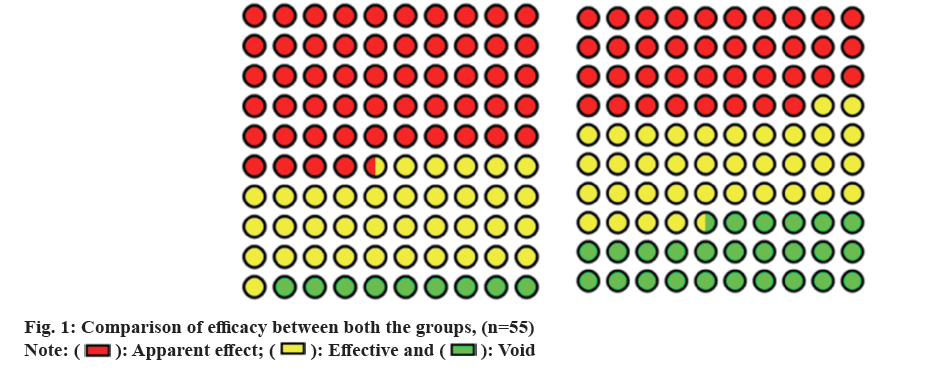
 .
.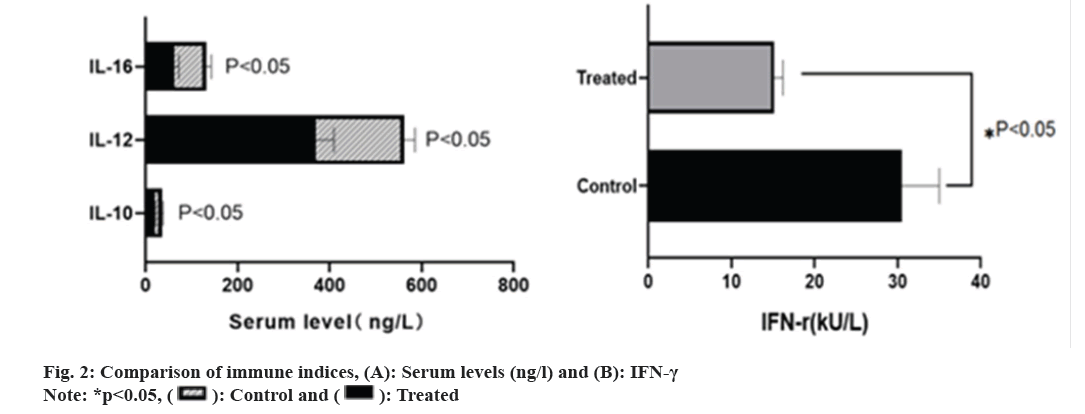
 .
.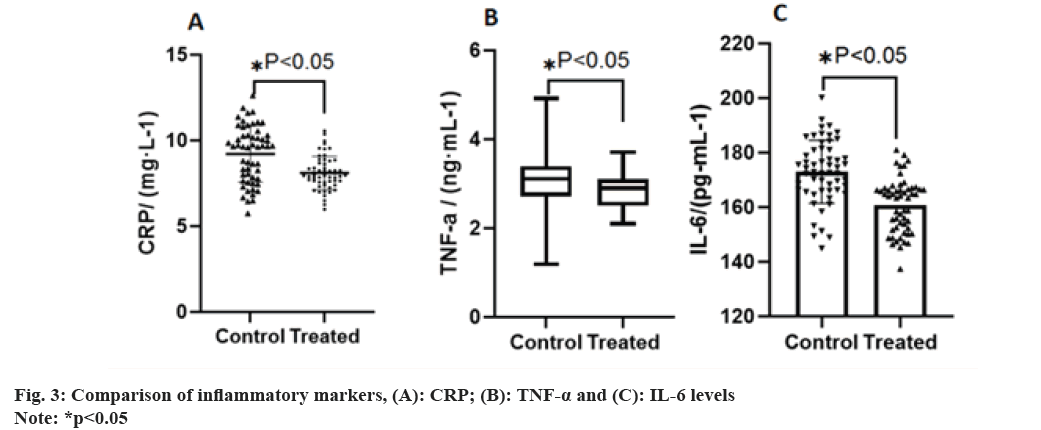
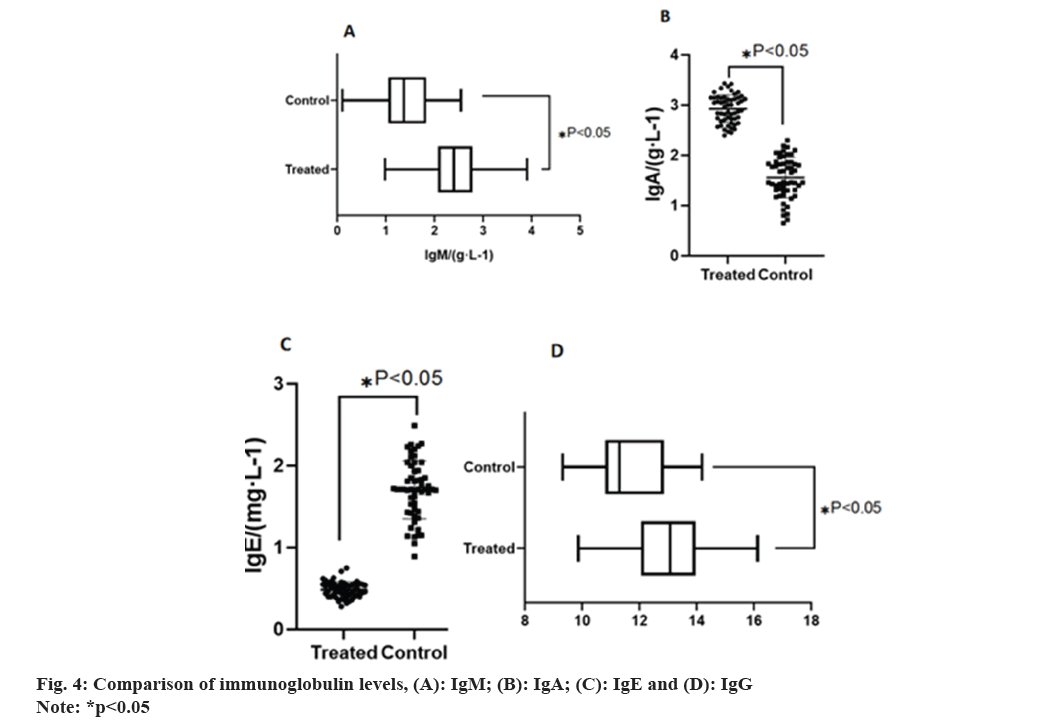
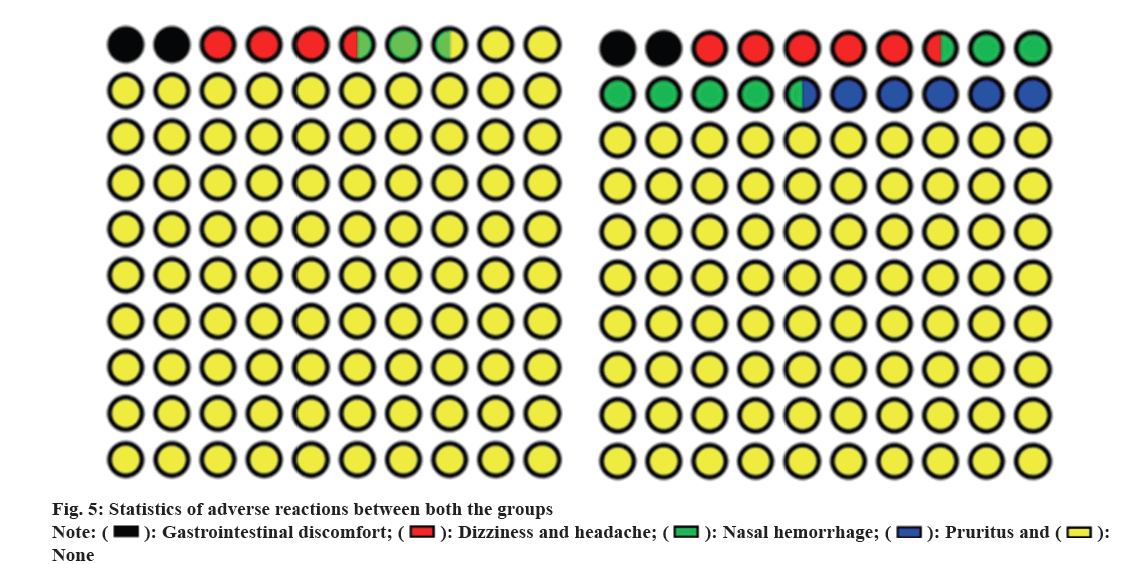
 None.
None.



